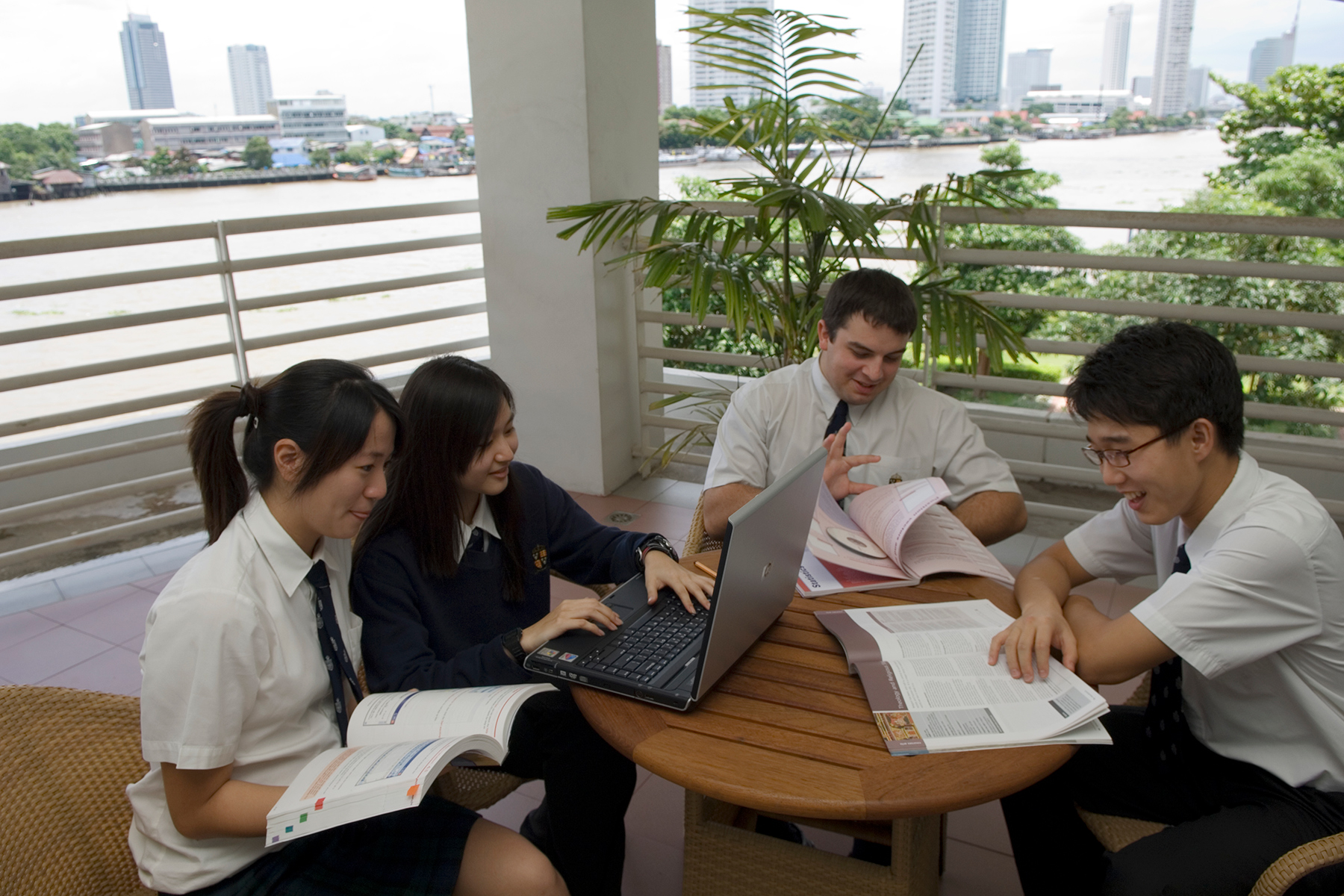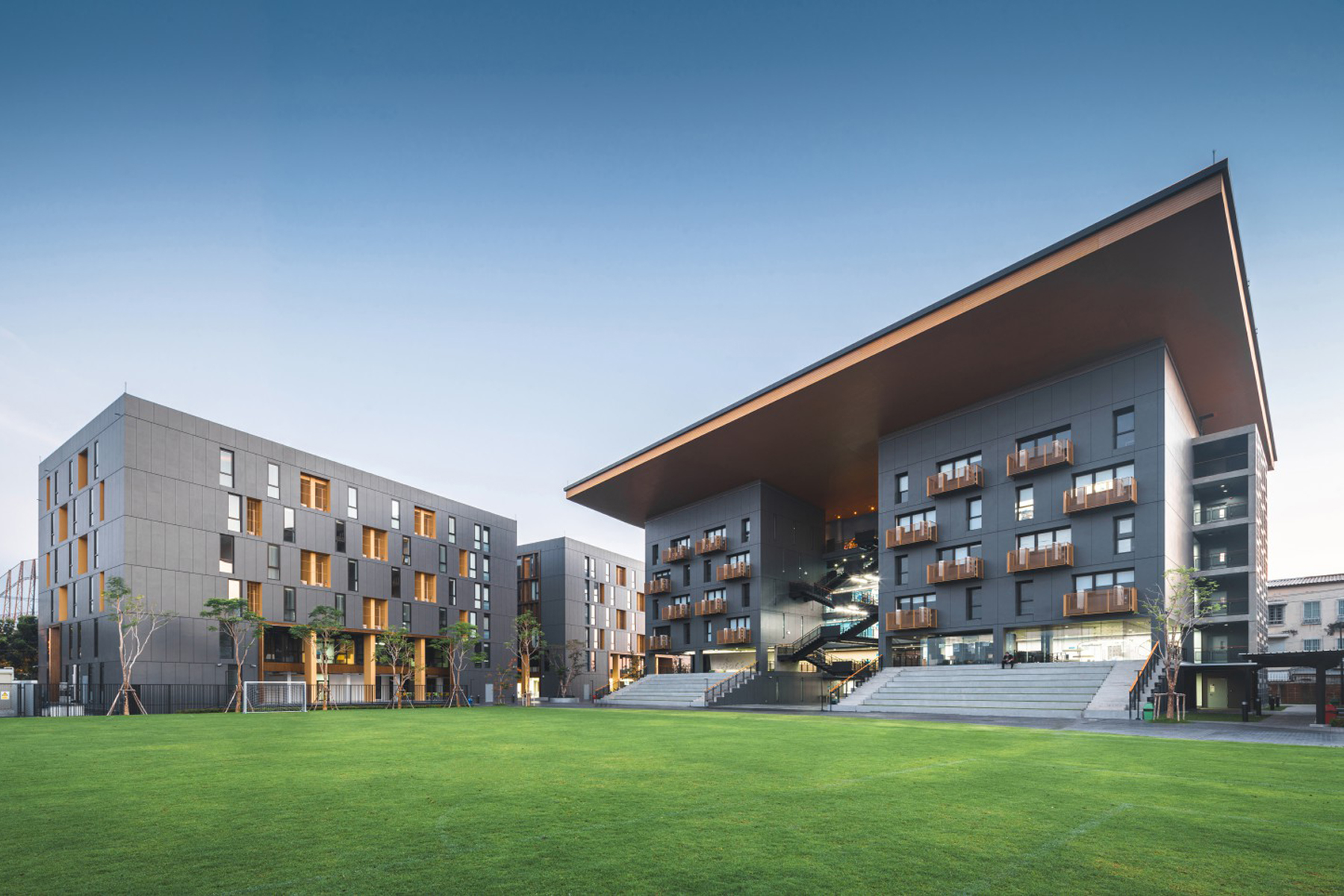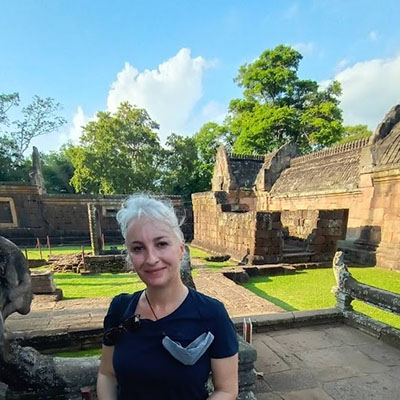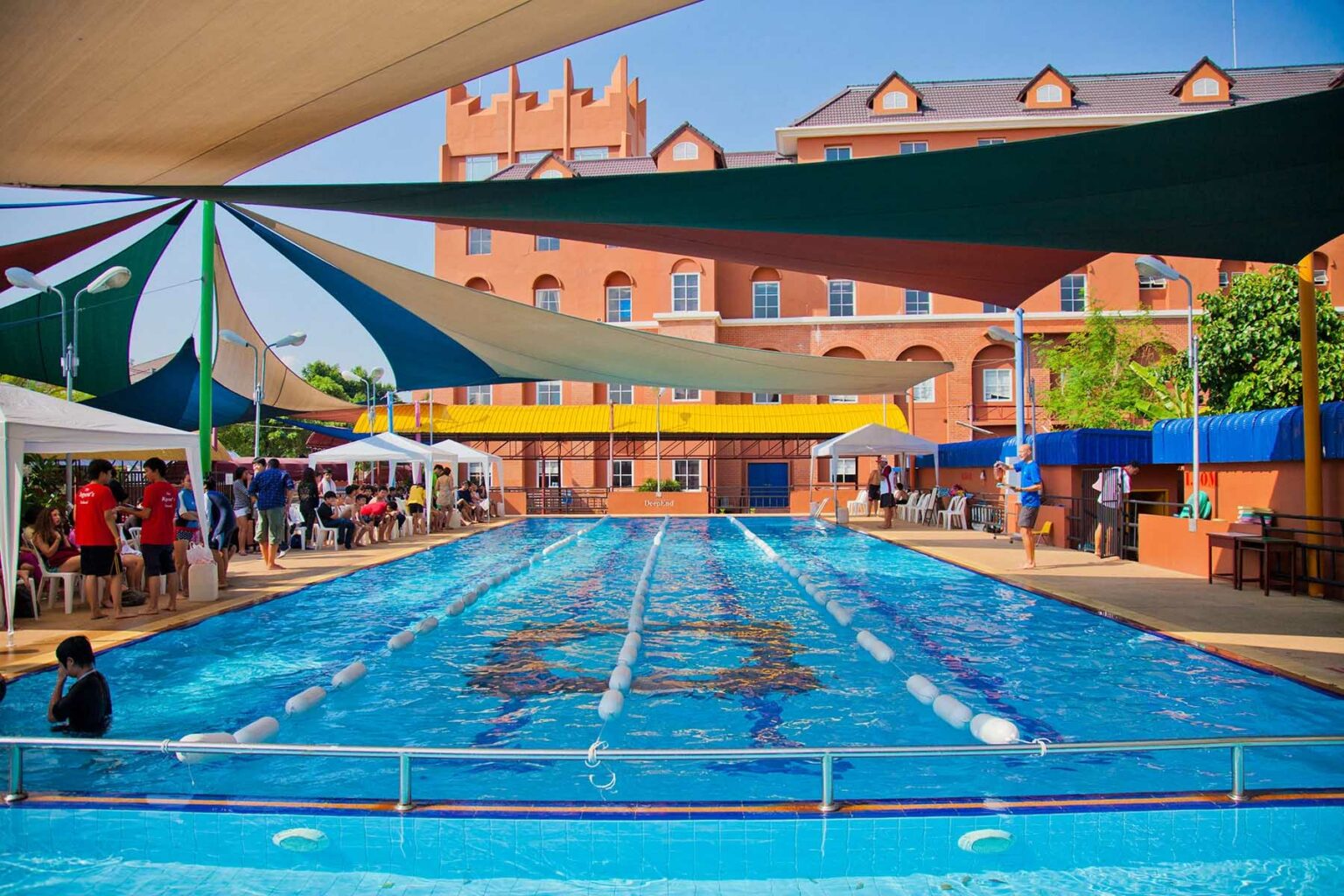Moving to Thailand is an exciting moment for any newcomer, but for those with families, things get a little more complicated. Living there with children means navigating the education system and figuring out where to send them to school.
Among the numerous choices, most expats in Thailand opt for international schools for their kids. There are many reasons for this, including the multicultural environment, an international curriculum, and a familiar language of instruction.
Learn how the system works in the following sections:
The education system in Thailand
International schools (โรงเรียนนานาชาติ) in Thailand are private, often non-profit, institutions. However, the country’s education system also includes a public framework following a local curriculum developed by the government.
Unfortunately, the local education system lags behind countries like Singapore and Japan. This is one of the main reasons expat parents overwhelmingly choose to educate their children at one of the many international schools.

Legally, Thailand mandates 12 years of compulsory education. This includes six years of primary school and six of high school. Local schools use Thai as the language of instruction, which is a major barrier for students who don’t speak, read, or write Thai.
International schools in Thailand
All international schools in Thailand are private institutions, and the International School Association of Thailand bears responsibility for them. However, accreditation can come from several sources, including the Council of International Schools, the New England Association of Schools and Colleges, and the Education Development Trust.
There are a significant number of international schools in Thailand, as the country has a large global population and European-style education is popular. As with most international schools, these largely cater to expat families, though well-off Thai people also choose to send their children to one.
Most of these schools – especially the older, more established ones – offer high-quality, globally-minded education and top-notch facilities and activities while celebrating their multicultural student bodies. Pupils from international schools in Thailand tend to go on to great universities around the world, including ones in Australia, the UK, and the US.
To cater to expat students, international schools generally follow popular curricula from other countries. The British Cambridge system is especially prevalent in Thailand, though the American curriculum is readily available, too.
Students will generally learn at least two languages at these schools. English is almost always the main language of instruction. However, most international schools require students to take a second language. Sometimes, this is Thai, though most schools offer other languages suitable for their expat population, such as French, Spanish, and Mandarin.
Although international schools generally accept students at all levels, from kindergarten through Grade 12, many expat students spend only a short time in Thailand, so they do not complete all stages of compulsory education there.
Most students who do graduate from an international school receive the IB Diploma, British A-Levels, or the American High School Diploma and SATs.
What types of international schools does Thailand have?
As is the case of most countries throughout Southeast Asia, international schools in Thailand tend to have sizeable student bodies, teachers from all over the world, great facilities, and – perhaps most importantly – a globally focused curriculum delivered in English.
The main differences between schools are the types of systems and the qualifications available. For example, Bangkok Patana School, Thailand’s first British school, delivers a British Cambridge education culminating in the International Baccalaureate (IB) Diploma. Conversely, the International School of Bangkok follows an adapted American education model that allows students to take the traditional IB Diploma, create their own program, or take AP courses.

Whichever school and curriculum they take, students at international schools in Thailand generally receive a comprehensive education that includes all the traditional subjects, along with some form of physical education, arts, and other elective subjects. They tend to use a range of curricula and teaching methods, so parents can opt for the one that best suits their families’ needs.
Bear in mind that parents will also have to pay for additional one-time and recurring costs. For example, these might include application fees, registration deposits, activity costs, uniforms, and electronics like laptops or tablets.
International Primary Curriculum (IPC)
Many international schools in Thailand offer a truly global education for early years. There are two main programs – although they are quite similar, parents should do their research to find the most suitable for their children.
The International Primary Curriculum (IPC – หลักสูตรประถมศึกษานานาชาติ) is a global adaptation of the British education model. Students benefit from hands-on education and focus on attaining specific goals in different subjects. In Thailand, the IPC is available at:
- Norwich International School (Bangkok)
- St Stephen’s International School (Bangkok and Khao Yai)
- Lighthouse International School (Phuket)
However, the IB’s Primary Years Program (PYP – หลักสูตรประถมศึกษา) is more popular in Thailand, with a total of 15 schools across the country adopting this system. This curriculum teaches students curiosity and lateral thinking, priming them for the later IB programs. Some of the popular IB PYP schools in Thailand are:
- UWC Thailand (Bangkok)
- St Andrews International School (Bangkok)
- NIST International School (Bangkok)
The International Baccalaureate (IB)
The IB Diploma program is fast becoming the gold standard high school leaver’s qualification, so it’s little wonder that 24 international schools in Thailand offer this. This Swiss-made curriculum provides a rigorous and comprehensive education, and though it is challenging, it is a good choice for expat students intending to go to top-level universities.
During the two-year program, students take three higher-level subjects in detail and two standard-level subjects, which are a little less rigorous. They can essentially build their own study programs, but they must study at least one math and science class, English, and a humanities subject.
To receive their diploma, students must also fulfill the Extended Essay requirement – 4,000 words on a topic of their choice, take the philosophical Theory of Knowledge class, and complete the CAS (creativity, action, service) program, which totals 150 hours.

These international schools are among the most popular offering the IB in Thailand:
- Bangkok Patana School
- UWC Thailand
- Garden International School (GIS – Pattaya)
- International School of Samui
- International School Bangkok
- Regents International School Pattaya
- St Andrew’s International School (Bangkok)
- NIST International School (Bangkok)
American international schools and Advanced Placement (AP)
Many international students aim to attend university in the US, and a handful of international schools in Thailand offer the American education system. Throughout their study at these schools, students track their grade point average (GPA) and must meet a certain level to graduate.
Although the IB Diploma program is still popular at many of these schools, some allow students to take the American SATs and Advanced Placement (AP) courses to get credit at American universities.
The American curriculum is available at these schools:
- International School Bangkok
- The American School of Bangkok (ASB)
- QSI International School of Phuket
- American Pacific International School
- Ruamrudee International School
British international schools
The British education system and its Cambridge curriculum are very popular at international schools in Thailand. This is especially true because a handful of British schools, including Shrewsbury and Rugby, have opened international campuses in the country.
At these schools, students generally receive a broad education that focuses on traditional subjects, such as English, math, science, and humanities. However, in the last four years of secondary school, students choose a few topics to study in more depth.
For example, students spend two years studying for the International General Certificates of Secondary Education (IGCSE – ใบรับรองทั่วไประดับมัธยมศึกษานานาชาติ) and take the exams around the age of 15 or 16. Then, in the final two years, students usually take the IB Diploma program, though some schools offer the British A-Levels.
Students who want to pursue a British-style education can do so at these international schools:
- Bangkok Patana School
- Garden International School
- Rugby School Thailand
- Shrewsbury International School
- British International School
- Brighton College
- King’s College
- St Andrew’s International School
Religious schools
There are a handful of international schools in Thailand that pair their chosen curriculum with religious education. Many of these are Christian schools (โรงเรียนคริสต์), but there is one Jewish school (โรงเรียนศาสนายิว), too. Students study the school’s religion alongside their regular classes and often attend church or temple.
While these are not as popular as the traditional international schools, students can pursue this style of religious-minded education at the following schools:
- Bangkok Christian International School (Christian/American)
- International Christian School (Christian/American)
- Christliche Deutsche Schule Chiang Mai (CDSC – Christian/German)
- Manorom International Christian School (Christian/American)
- Trinity International School (Christian)
- Adventist International Mission School (Seventh Day Adventist)
- Grace International School (Christian)
- Chiang Mai International School (Christian/American)
Method schools
In Thailand, method schools usually offer the Montessori (มอนเตสซอรี่) or Steiner-Waldorf (ชไตเนอร์-วัลดอร์ฟ) system. Both programs allow the child to lead their development and encourage curiosity and independence. However, the latter has a larger focus on learning by experience through art, outdoor pursuits, and physicality.
Expat parents who want their children to experience these methods can look at the following schools:
- Montessori Academy Bangkok (MABIS)
- John Wyatt Montessori (JWM)
- Montessori House Phuket
- Pan-Asia International School (PAIS)
- Northern International Montessori School
- Chiang Mai Montessori International School
- Oak Waldorf Steiner Educational Center Phuket
- The Waldorf Phuket
Other “national” international schools
Some international schools in Thailand offer other national curriculums. These are popular among internationals who want their children to follow the same education system as in their home country. Like most other schools, students generally follow a broad academic curriculum and then take the IB Diploma program or the curriculum’s national qualification.

Some of these national schools include:
- British Columbia International School (Canadian)
- Australian International School Bangkok (AISB – Australian/British)
- RIS Swiss Section Deutschsprachige Schule Bangkok (German/Swiss)
- École Française Internationale de Pattaya (French)
- Singapore International School of Bangkok (SISB Pracha Uthit – IB/Singaporean)
Pros and cons of international schools in Thailand
Expat parents looking to put their children in school in Thailand have plenty of options, though private international schools are the most popular choice. Still, for those debating between these and local schools, it is worth considering the following:
- Thai schools deliver classes almost solely in the local language. However, international schools primarily use English, and students can take other languages – including Thai – as electives.
- While Thai schools offer opportunities for integration into the local community, this is not always suitable for students who are only in the country for a short time. It will also make the transition between countries and schools smoother academically.
- What will your child want to do after school? If it’s likely that they’ll study in another country, a recognizable qualification – like the IB or A-Levels – would be a significant advantage.
- Each child has different interests that they will want to pursue through extra-curricular activities. International schools in Thailand offer far more facilities and activities to help them pursue their passions.
- Another aspect to consider is the social side of international schools in Thailand. These schools are often seen as networking opportunities for children’s future careers and social spheres.
- Before deciding on a school, it is worth checking the staff turnover; schools with teachers who stay in long-term positions are preferable for children’s education standards, continuity, and stability.
However, there are some drawbacks, namely, the price. International schools, even if they are non-profit enterprises, charge hefty fees. The exact cost depends on the child’s school year and can vary widely. For example, the International School of Bangkok charges ฿592,000 per year for pre-kindergarten students and up to ฿1,075,000 per year for high school students.

Local expert
Jane Evans
Insider tip
Some international schools, particularly the popular ones, are difficult to enter and expect one-time contributions in exchange for entry. Sometimes, these are known as enrichment fees.
How do you choose an international school?
If you decide to send your child to an international school in Thailand, your next step is narrowing them down. There are, of course, numerous considerations when making this decision, and answering the following questions can be helpful:
- Which curriculum and qualification is best for the child and their future plans?
- How much can the family afford to spend on tuition fees and other incidental educational costs?
- What languages can the child study at the school?
- Where is the school, and is it an easy commute?
- Does the school have the facilities and activities the child needs?
- What is the school’s reputation like?
Financial aid and scholarships for international schools in Thailand
Most international schools in Thailand do not offer financial aid or scholarships. Instead, it is more common to find discounted rates for particular fees.
For example, Bangkok Patana School offers a ฿50,000 discount on the one-time entrance fee if a family has more than one child registering. In addition, families with multiple children attending the school receive 5% off for the third child, 10% for the fourth, and 15% for five or more children.
Useful resources
- International School Database – explore Thailand’s international schools
- International Schools Association of Thailand (ISAT) – organization promoting high-quality international education in Thailand








